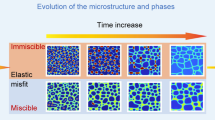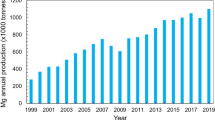Abstract
The orientation between twin boundary (TB) and loading direction may play an intriguing role in the deformation behaviors of twinned metallic materials. In this aspect, its essential effect on the high-entropy alloy (HEA) nanocrystals is elusive. Attention herein is focused on the atomicscaled deformation mechanisms and fracture behaviors of HEA nanocrystals containing twins of even smaller spacings via a combined approach of in situ tensile tests inside a high-resolution transmission electron microscope and molecular dynamics simulations. The results indicate that the deformation mechanisms (especially dislocation activities) of HEA nanocrystals depend on the load orientation with respect to TBs. Because of the low activation energy and uneven local composition of HEA, the surface acts as an effective dislocation source and, together with Schmid factor, dominate the activated dislocation slip system. The load orientation-dependent TB-dislocation interactions may transform the type of fracture from semi-brittle to ductile. Our results indicate that the deformation mechanisms and the types of fracture in HEA nanocrystals can be controlled by changing the orientation.
Impact Statement
The nanotwinned materials attract extensive attention because of their exceptional combination of high strength and ductility. The deep understanding of the role of twin will bring advances to design new strong and ductile materials. The orientation between twin boundary (TB) and loading direction plays an intriguing role in the deformation behaviors. In this work, we use a novel method, in situ transmission electron microscope (TEM) melting, to produce nanotwin with special load/TB orientation. The strong load/TB orientation dependences of deformation mechanisms and fracture modes are revealed via in situ TEM strain and molecular dynamics simulations. The free surface together with Schmid factor dominate the activated dislocation slip system. This work points out an alternative route in designing advanced twin-inducedplasticity materials by controlling load/TB orientations.
Similar content being viewed by others
Author information
Authors and Affiliations
Corresponding authors
Supplementary Information
Below are the links to the Electronic Supplementary Materials.
Supplementary movie S1: The in situ tensile test of a HEA nano-junction with a twin almost perpendicular to the tensile direction inside the transmission electron microscope.
Supplementary movie S2: The in situ tensile test of a HEA nano-junction with a twin almost parallel to the tensile direction inside the transmission electron microscope.
Supplementary movie S3: The in situ tensile test of a HEA nano-junction with a twin inclined to the tensile direction inside the transmission electron microscope.
Rights and permissions
About this article
Cite this article
Liang, C., Zhang, Q., Shao, Y. et al. Influence of load orientations with respect to twin boundaries on the deformation behaviors of high-entropy alloy nanocrystals. MRS Bulletin 46, 205–216 (2021). https://doi.org/10.1557/s43577-021-00046-y
Published:
Issue Date:
DOI: https://doi.org/10.1557/s43577-021-00046-y




